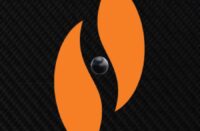WESTLAKE, Texas, Aug. 17, 2017 /PRNewswire/ — HeartSciences today announced the European launch of MyoVista® high sensitivity electrocardiograph (hsECG™) Testing Device, developed in response to the global unmet need for effective, low-cost, front-line screening of cardiac disease in both symptomatic and asymptomatic patients. MyoVista measures the heart’s energy during each heartbeat using a type of advanced signal processing known as Continuous Wavelet Transform (CWT). Advanced signal processing has revolutionized early detection and predictive accuracy in other applications like weather forecasting. Just as a Doppler radar color image shows the energy of a storm, MyoVista provides physicians a detailed visual image of the energy distribution during the cardiac cycle.
Electrical, structural, and coronary artery disease (CAD) comprise the three main categories of heart disease, but existing ECG technology, which functions essentially in the same way as when first introduced in 1903, has limited effectiveness in detecting structural and CAD. Even though it is the front-line screening tool used by physicians to detect heart disease, conventional resting ECG technology detects CAD less than 50 percent of the time1, which leaves a large number of patients who have heart disease undiagnosed. As a result, current healthcare guidance does not recommend use of ECG testing on asymptomatic patients.
“Currently, there’s a significant diagnostic gap in detecting heart disease early, resulting in a burden on both patients and healthcare systems,” said Andrew Simpson, chairman, HeartSciences. “We believe MyoVista hsECG could play an important role in achieving the preventative treatment ambitions of many healthcare systems as well as help reduce unnecessary healthcare expenditures.”
The application of advanced signal processing technology can assist in closing the diagnostic gap by providing a low-cost, front-line tool which can assist in the early detection of cardiac dysfunction. During the validation trial, MyoVista hsECG technology detected cardiac dysfunction in the resting (diastolic) phase of the cardiac cycle with 88 percent sensitivity and 87 percent specificity.2 The 200-patient trial assessed the presence of left ventricular diastolic dysfunction.
“Innovation is needed to advance front-line testing of patients for heart disease,” said Dr. Partho P. Sengupta, chief of Cardiology and chair of Cardiac Innovation at West Virginia University, and lead investigator on a MyoVista clinical trial. “High sensitivity ECG technology holds significant promise for improving the detection of heart disease.”
An estimated 17.7 million people died from cardiovascular disease (CVD) in 2015, representing 31 percent of all global deaths and with heart disease accounting for the majority of CVD deaths.3 Costs associated with diagnosing and treating CVD represents the largest expenditure for most health authorities around the world, accounting for nearly €111 billion in direct costs and €99 billion in lost productivity in the European Union4, as well as $300 billion in direct costs and $235 billion in lost productivity in the U.S.5
“It makes sense to use advanced signal processing to create a modern, low-cost, front-line tool to detect heart disease,” said Mark Hilz, chief executive officer, HeartSciences. “While MyoVista represents a first-of-its-kind application to electrocardiographic testing, advanced signal processing has already enabled key imaging technologies such as computed tomography (CT) scans, magnetic resonance imaging (MRI), Doppler echocardiography and positron emission tomography (PET) scans.”
MyoVista hsECG uses the same 12-lead, at-rest testing protocol as traditional ECG devices on the market today to help facilitate easy adoption for clinical staff. The difference is that MyoVista is a single test that provides healthcare practitioners with unique informatics, as well as conventional 12-lead resting ECG tracings and conventional ECG interpretive analysis. In combination, these assist identification of cardiac dysfunction related to CAD and structural disease, as well as identifying arrhythmias.
MyoVista hsECG is available across the European Union, where it received the CE (Conformité Européenne) Mark approval for commercial sale. The company is also in the process of expanding distribution to Australia, the Middle East, Latin America, Asia-Pacific and Canada. The device is not currently available for sale or use in the United States. HeartSciences expects to seek U.S. Food and Drug Administration clearance for MyoVista in 2018.
About HeartSciences
Using patented proprietary technology, HeartSciences develops medical devices that focus on the early detection of heart disease. Heart disease kills seven million people worldwide each year, more than all cancers combined, and is the costliest disease state in healthcare. HeartSciences is bridging today’s “diagnostic gap” in cardiac care by providing low-cost effective solutions that help to identify at-risk patients prior to experiencing an adverse cardiac event, such as a heart attack. HeartSciences (formerly known as Heart Test Laboratories) is a privately-held U.S. corporation based in Westlake, Texas, and to date has been funded by private investors. For more information or to find a local distributor, visit www.heartsciences.com.
1 Koskinas K. Appropriate use of non-invasive testing for diagnosis of stable coronary artery disease. E-Journal of Cardiology Practice. 2014;12(19). Retrieved from https://www.escardio.org/Journals/E-Journal-of-Cardiology-Practice/Volume-12/Appropriate-use-of-non-invasive-testing-for-diagnosis-of-stable-coronary-artery.
2 HeartSciences Data on File.
3 World Health Organization. (2017). Cardiovascular Diseases. Retrieved from http://www.who.int/mediacentre/factsheets/fs317/en/.
4 European Heart Network. (2017, Feb.). European Cardiovascular Disease Statistics: 2017 Edition. Retrieved from http://www.ehnheart.org/cvd-statistics.html
5 American Heart Association and American Stroke Association. (2017). Cardiovascular Disease: A Costly Burden for America – Projections through 2035. Retrieved from https://www.heart.org/idc/groups/heart-public/@wcm/@adv/documents/downloadable/ucm_491543.pdf.
SOURCE HeartSciences






